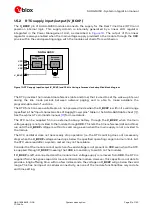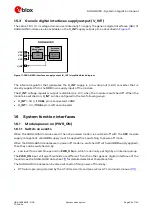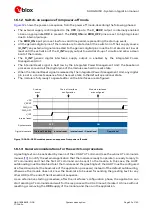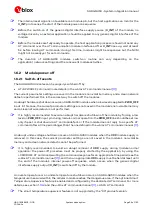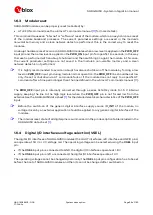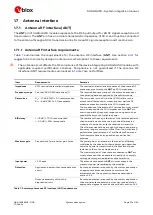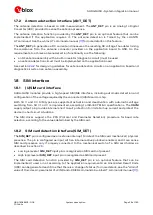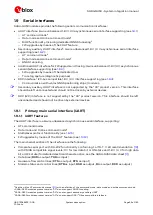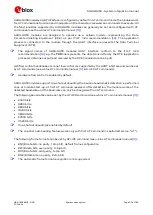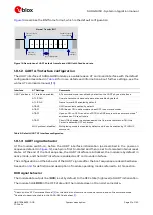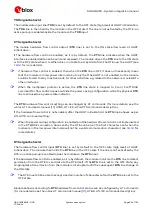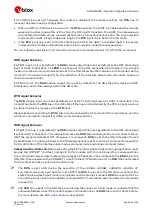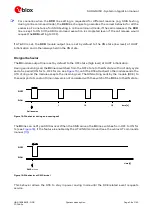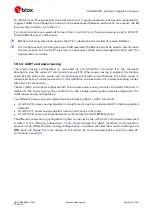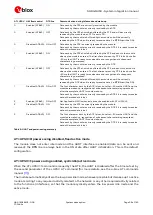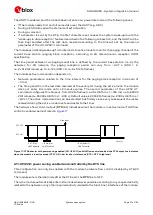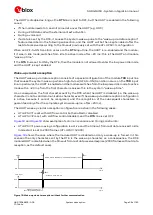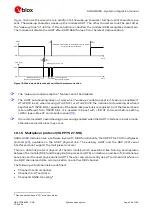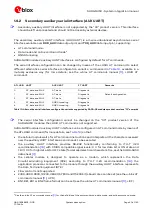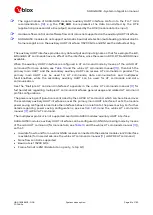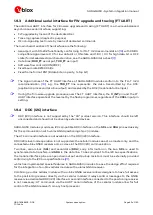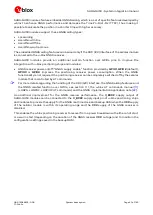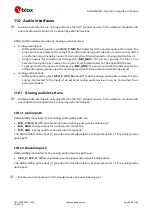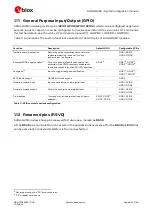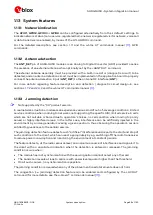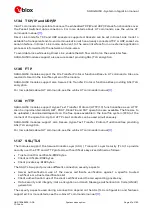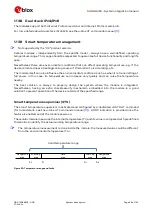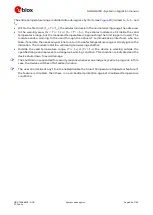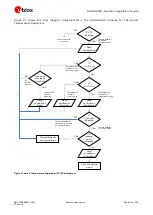
SARA-G450 - System integration manual
UBX-18046432 - R08
System description
Page 35 of 143
C1-Public
For SMS arrival, if several events coincidently occur or in quick succession, each event independently
triggers the RI line, although the line will not be deactivated between each event. As a result, the RI
line may stay to ON for more than 1 s.
If an incoming call is answered within less than 1 s (with ATA or if auto-answering is set to ATS0=1)
than the RI line is set to OFF earlier.
☞
RI line monitoring cannot be used by the DTE to determine the number of received SMSes.
☞
For multiple events (incoming call plus SMS received), the RI line cannot be used to discriminate
the two events, but the DTE must rely on subsequent URCs and interrogate the DCE with the
appropriate commands.
1.9.1.4
UART and power saving
The power saving configuration is controlled by the AT+UPSV command (for the complete
description, see the u-blox AT commands manual
). When power saving is enabled, the module
automatically enters low power idle mode whenever possible, and otherwise the active mode is
maintained by the module (see section
for definition and description of module operating modes
referred to in this section).
The AT+UPSV command configures both the module power saving and also the UART behavior in
relation to the power saving. The conditions for the module entering idle mode also depend on the
UART power saving configuration.
Two different power saving configurations can be set by the AT+UPSV command:
AT+UPSV=0, power saving disabled: module forced on active mode and UART interface enabled
(default)
AT+UPSV=1, power saving enabled: module cyclic active / idle mode
AT+UPSV=2, power saving enabled and controlled by the UART RTS input line
The different power saving configurations that can be set by the +UPSV AT command are described
in detail in the following subsections.
summarizes the UART interface communication
process in the different power saving configurations, in relation with HW flow control settings and
RTS input line status. For more details on the +UPSV AT command description, see the u-blox AT
commands manual

